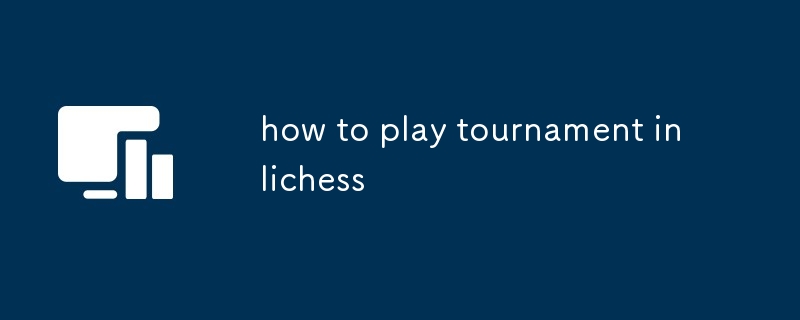This text teaches users how to register for and engage in tournaments on Lichess, providing details on the various tournament options and rules and guidelines for respectful and fair play.

How do I register for a tournament on Lichess?
To register for a tournament on Lichess, follow these steps:
- Go to the Lichess Tournaments page: https://lichess.org/tournament
- Click on the "Create tournament" button
- Enter the tournament name, description, and other details
- Click on the "Create" button
- Your tournament will be created and you will be able to invite players or start the tournament
What types of tournaments are available on Lichess?
Lichess offers various types of tournaments, including:
- Arena:A long tournament with multiple rounds, where players are awarded points based on their performance
- Swiss:A tournament with multiple rounds, where players are paired against opponents with similar ratings
- Single elimination:A tournament where players are eliminated after losing a match
- Team battle:A tournament where teams of players compete against each other
- Mirror:A tournament where all players play the same position from both sides
Are there any rules or guidelines I should follow when playing in a Lichess tournament?
Yes, there are certain rules and guidelines that you should follow when playing in a Lichess tournament:
- Be respectful:Treat your opponents with respect, regardless of their skill level or rating
- Be fair play:Do not use engines, databases, or other unfair means to gain an advantage
- Follow tournament rules:Each tournament may have specific rules, such as time controls or draw rules. Be sure to familiarize yourself with these rules before playing
- Avoid disruptive behavior:Do not engage in excessive talking, chatting, or other activities that may disrupt the tournament
- Report any suspicious behavior:If you suspect that another player is cheating or violating the rules, report it to a tournament organizer
The above is the detailed content of how to play tournament in lichess. For more information, please follow other related articles on the PHP Chinese website!






